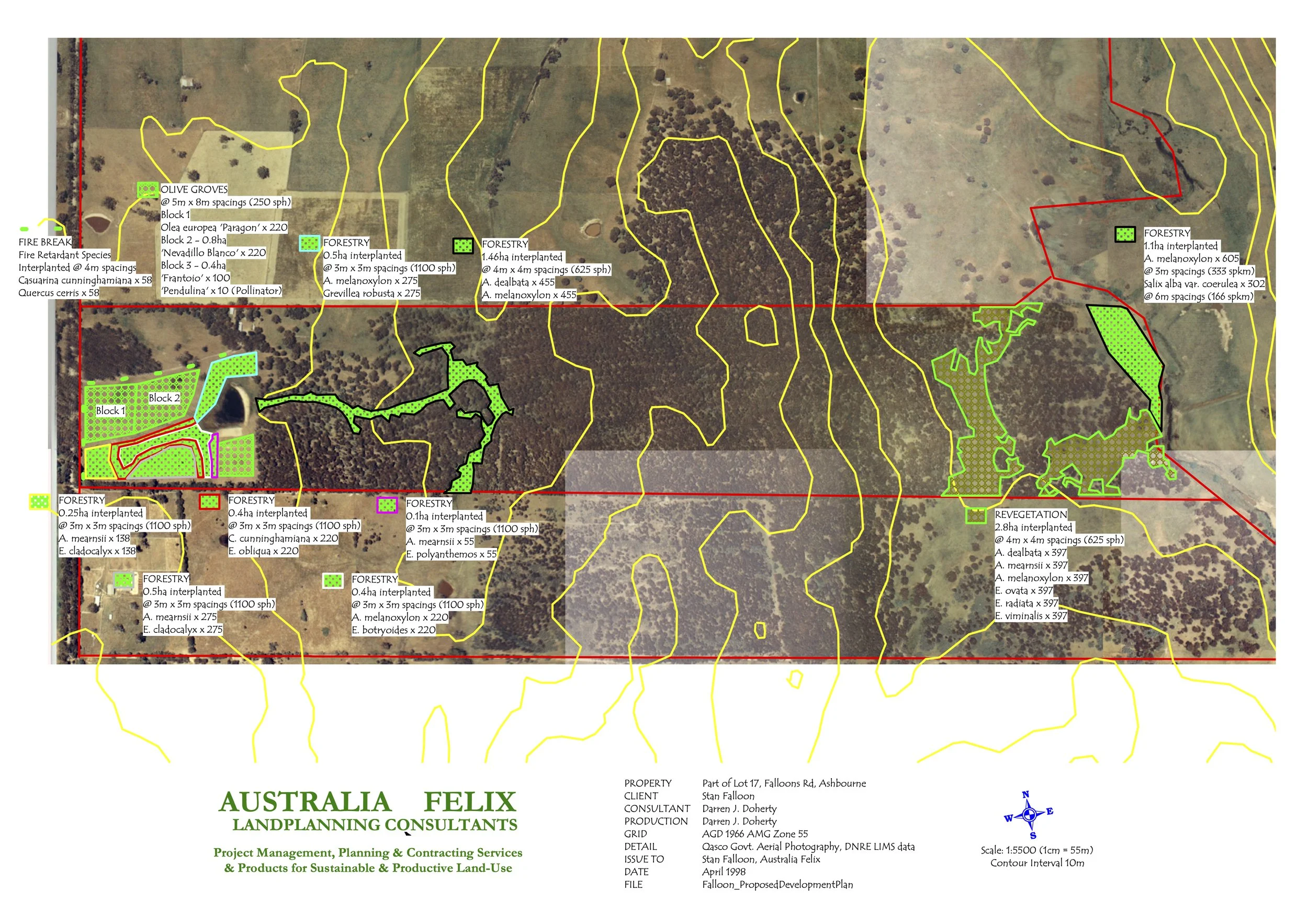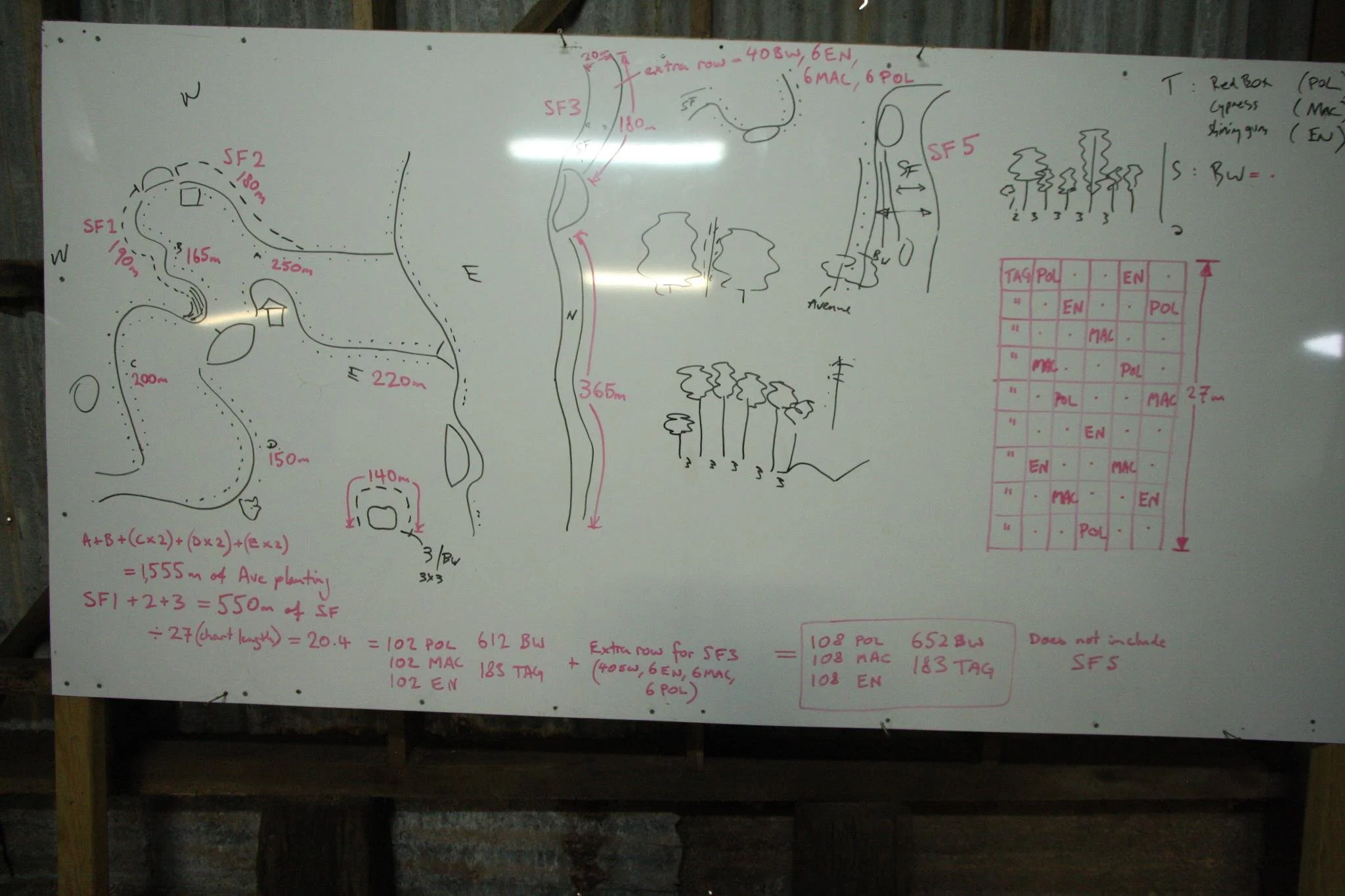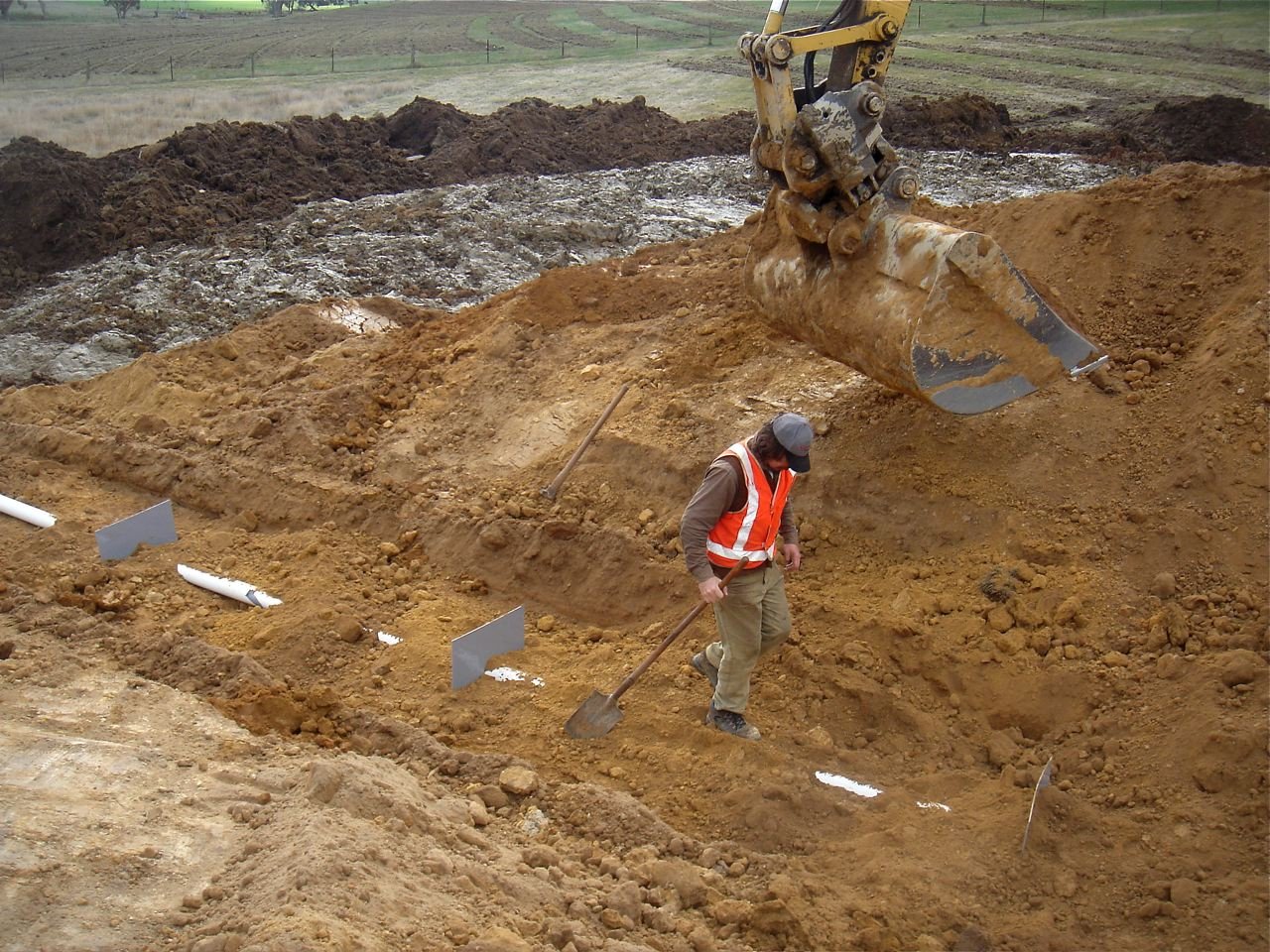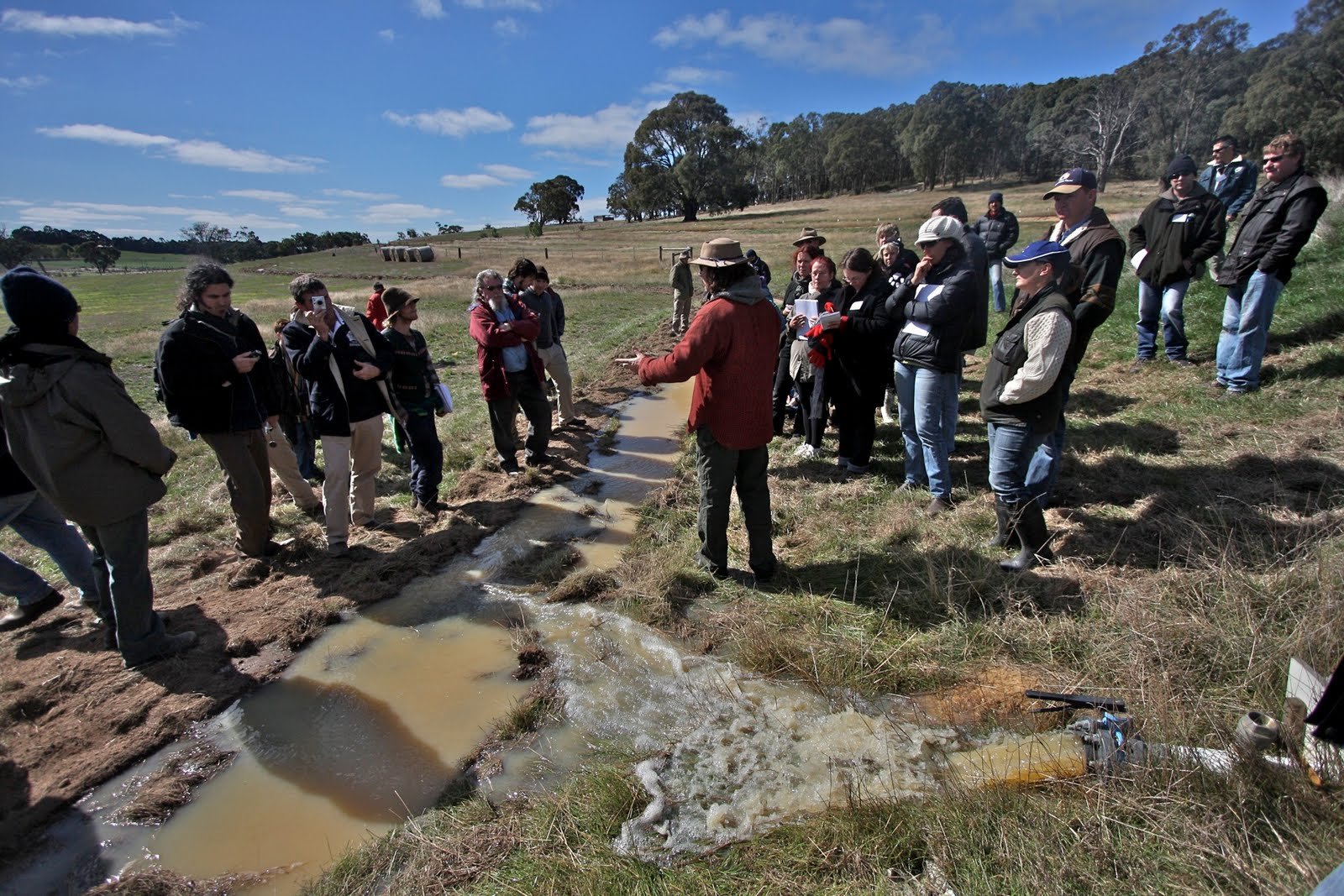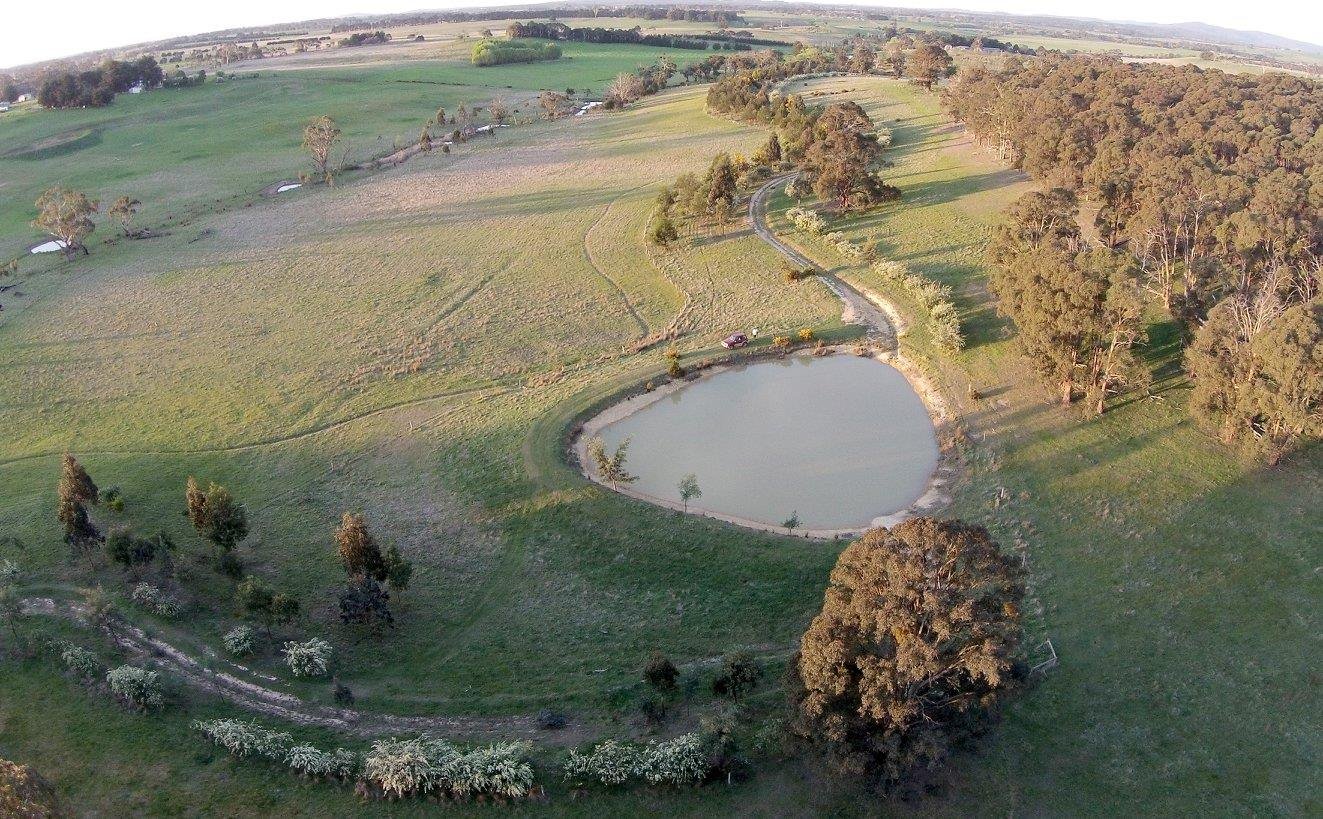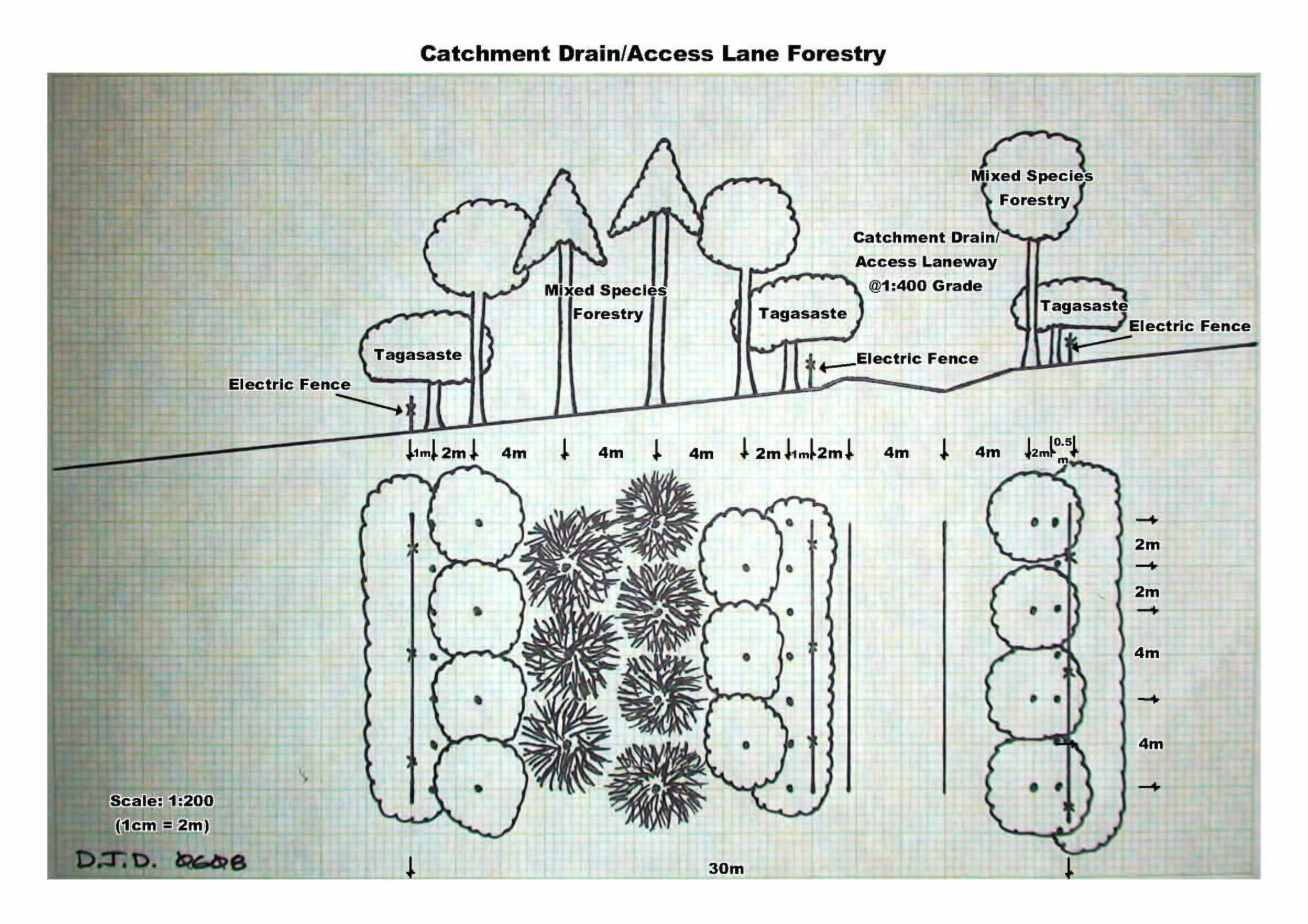Taranaki Farm
Dja Dja Wurrung Country, Ashbourne, Victoria, Australia
Whole Farm Plan | Olives | Timber | Keyline Dams, Roads, Trees
Topo Survey | Layout Design | Site Preparation | Planting
https://www.taranakifarm.com.au/
@taranakifarm
37°20'35.78"S, 144°28'4.79"E | 564m ASL | 690mm Avg. Rainfall
We were introduced to Stan Falloon (1949-2024) by his accountant in 1997, based on the recommendation that improving his farm would be something worth pursuing. At the time Stan was the executive project manager for Grocon, one of Australia’s biggest building companies and was responsible for overseeing the constructing some of Melbourne’s most iconic buildings. Stan’s father Jack Falloon was still running the main farm ‘Taranaki Farm’ immediately to the north of Stan’s block, ‘Sterling Park’.
Starting with Sterling Park we designed 3 blocks of olives and a range of mixed species farm forestry plantation. Over the rest of 1998 we installed the olive groves and the western portion of forestry blocks.
By 2001 Stan had taken over Taranaki Farm and asked us to install another olive grove on a west-facing strip of quaternary volcanics that Jack used to grow a cash crop of shallots on. By this time we had surveyor Konrad Ensor was working full-time as a part of our team and so we designed a layout following Keyline Geometry. For payment of our planning and installation services we worked out a deal with Stan to swap a pop-top caravan that he and his family had used for holidays and was now ‘retired’ to one of the farm sheds.
Over the years that followed Stan would call me up and he’d say he wanted to put more trees on Taranaki Farm and by 2008 we had some time at home (we were interstate and overseas from 2002-2007) and we were able to look at doing so. This coincided with Stan’s son Ben coming to live on the farm with his partner Nina Grundner and their baby daughter Maya. Ben had been working in marketing in Sydney and was keen to turn his hand to a rural lifestyle and Nina was an avid homemaker and homesteader. Over 2008-9 we worked closely with them, developing a concept plan for the Taranaki Farm block, installing a number of dams and water harvesting features as well as different tree plantings. By 2009 Ben was now very active in the whole farm’s management and set about developing the farm using Keyline planning principles and by starting a range of enterprises which followed those of Polyface Farm (Virginia, USA).
In 2010 we originated the ‘RegenAG®’ brand and workshop series to follow on from the very successful ‘Carbon Farming’ courses we’d been running in the USA, México & Europe the years before. Taranaki Farm was the Victorian hub for these nationwide RegenAG® courses which were also very successful. By that stage Ben had taken full reins of the whole farm and following a couple of Polyface farm management courses we ran on the farm in October 2012 our work was done.
The farm has continued to be well known as an example of a wide range of ‘regenerative agriculture’ practices, though more recently its Facebook page has declared its direct-to-consumer supply channel is currently in recess.


